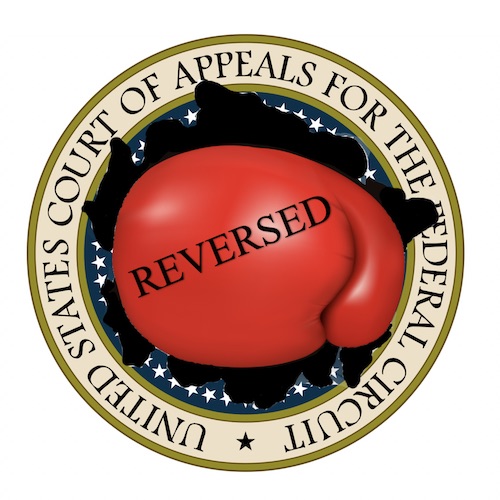“We have held that a suit may not be barred by claim preclusion, even where the same transactional facts are present in both suits, if infringement allegations are ‘temporally limited to acts occurring after final judgment was entered in the first suit.’” – CAFC
 The U.S. Court of Appeals for the Federal Circuit today issued a precedential opinion that said claim preclusion does not apply to allegations of induced infringement based on an earlier finding of direct infringement.
The U.S. Court of Appeals for the Federal Circuit today issued a precedential opinion that said claim preclusion does not apply to allegations of induced infringement based on an earlier finding of direct infringement.
The case involves U.S. Patent No. 8,206,987, owned by Inguran, LLC and directed to “a method for sorting bull sperm cells according to a specific DNA characteristic in order to preselect the gender of a domestic animal’s offspring,” according to the opinion. Inguran does business as STGenetics (ST). ST has been involved in litigation with “bull stud” company, ABS Global, Inc., since 2014. In ABS I, ABS brought antitrust claims against ST, and ST countersued for breach of contract, trade secrets misappropriation and patent infringement. Specifically, ST said that ABS’s GSS System directly infringed at least one claim of the ‘987 patent.
The U.S. District Court for the Western District of Wisconsin ultimately found claim 2 of the patent invalid and the rest valid and infringed, and awarded ST a lump sum of $750,000 and a royalty rate of $1.25 per future “sexed semen straws” sold by ABS. Sexed semen straws are what ABS sells, as a “bull stud,” using semen drawn from its own bulls that is packaged in “straws” for use in artificial insemination.
In clarifying the scope of the ongoing royalty, the court said at the time that “th[e] ongoing royalty covers straws sold by ABS that were processed with GSS technology and imported into the United States for sale.”
The district court’s judgment in ABS I was appealed to the Seventh Circuit and certain issues were sent back to the court on remand. A second suit brought by ST, ABS II, involved additional patent infringement claims and was consolidated with the remand proceedings from ABS I. During the remand trial, ST learned that ABS had been selling and licensing the GSS System to third parties so they could produce their own sexed straws.
ST then brought a third suit against ABS (ABS III), asserting two more recently issued patents, plus additional infringement claims on the ‘987 patent, alleging induced infringement on all of the patents based on ABS’s selling and licensing of the GSS machines to third parties.
ABS filed a motion to dismiss the claims of induced infringement on the ‘987 patent as being precluded by the judgment in ABS I. The district court agreed it was, and in December 2021 also clarified the scope of its original order to explain that the ABSI I judgment “is reasonably interpreted to cover straws produced by third parties using GSS technology as licensed by ABS.” The court also clarified that it agrees “Count I of [ABS III] is precluded by the judgment in ABS I.”
On appeal to the CAFC, ST challenged both the finding of claim preclusion and the district court’s interpretation of the scope of its order regarding the ongoing royalty rate. The CAFC explained that Seventh Circuit precedent dictates there are three elements to determining claim preclusion: “(1) an identity of the parties or their privies in the first and second lawsuits; (2) an identity of the cause of action; and (3) a final judgment on the merits in the first suit.” The only element in dispute here was element 2, “the same cause of action,” said the opinion.
ST highlighted the different elements needed to prove direct infringement versus induced infringement, and, addressing whether it could have raised induced infringement at the time of ABS I, said it would have been premature at the time because ABS had not yet begun to sell or license the GSS technology to third parties. For its part, ABS argued that the transactional facts of both cases were “all but identical” and that ST was aware of its commercial business model and was on notice about its licensing to third parties, so could have raised the induced infringement claim.
However, the CAFC found that ST did not allege induced infringement against ABS in ABS I and that it could not have raised the induced infringement claim at the time because the additional facts ST would have needed “to plausibly allege an induced infringement claim” were “facts that largely came to light during discovery in ABS II.”
“We hold that the induced infringement claim brought in ABS III is not precluded by the direct infringement claim brought in ABS I because the claims are not based on the same transactional facts,” wrote the CAFC.
While there was “minimal evidence” in the ABS I record that third parties were involved in ABS’s licensing model, “we have held that a suit may not be barred by claim preclusion, even where the same transactional facts are present in both suits, if infringement allegations are ‘temporally limited to acts occurring after final judgment was entered in the first suit,’” the court further explained.
Thus, the CAFC Said the district court erred in applying res judicata to the induced infringement claim.
As to the scope of the order, the CAFC said “the district court’s subsequent interpretation or clarification of its initial order essentially rewrites that order.” The plain language of the original order was limited to straws and did not mention GSS technology, said the CAFC. “[T]he scope of ABS’s direct infringement allegations cannot reasonably be expanded to cover actions of third-party licensees using GSS technology to make their own straws,” it concluded.
The district court’s dismissal order was thus reversed.

![[IPWatchdog Logo]](https://ipwatchdog.com/wp-content/themes/IPWatchdog%20-%202023/assets/images/temp/logo-small@2x.png)

![[Advertisement]](https://ipwatchdog.com/wp-content/uploads/2024/04/UnitedLex-May-2-2024-sidebar-700x500-1.jpg)
![[Advertisement]](https://ipwatchdog.com/wp-content/uploads/2024/05/Quartz-IP-May-9-2024-sidebar-700x500-1.jpg)
![[Advertisement]](https://ipwatchdog.com/wp-content/uploads/2024/04/Patent-Litigation-Masters-2024-sidebar-700x500-1.jpg)

![[Advertisement]](https://ipwatchdog.com/wp-content/uploads/2021/12/WEBINAR-336-x-280-px.png)
![[Advertisement]](https://ipwatchdog.com/wp-content/uploads/2021/12/2021-Patent-Practice-on-Demand-recorded-Feb-2021-336-x-280.jpg)
![[Advertisement]](https://ipwatchdog.com/wp-content/uploads/2021/12/Ad-4-The-Invent-Patent-System™.png)







Join the Discussion
No comments yet.